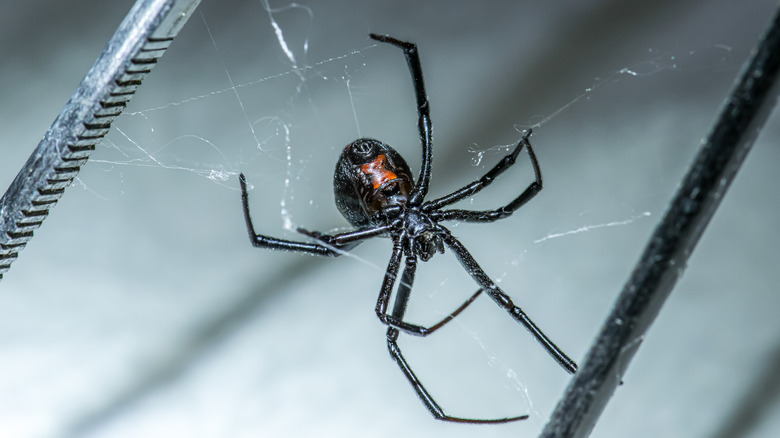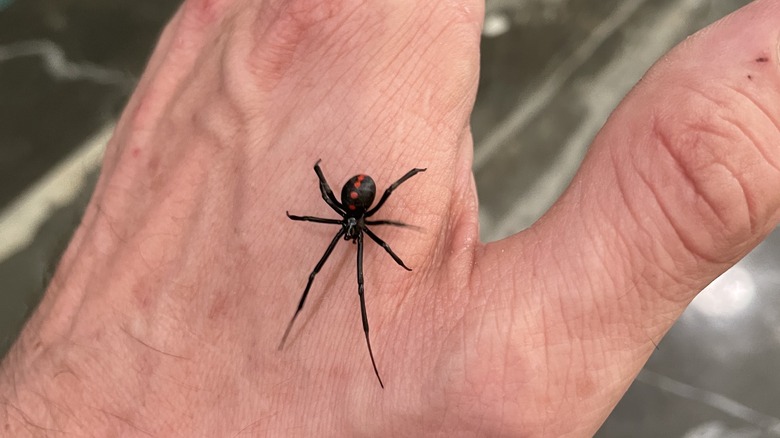Signs That It's Time To Call In A Professional For Black Widow Spiders
In the garden or inside the home, stay alert for a tiny black and shiny spider with unique red hourglass markings. Its bite is the venomous kiss of a latrodectus hesperus, commonly known as the black widow spider. One of the most common types of spiders you might see in your home, black widows are deadly enough to sometimes turn their male mates into a snack. While one isn't big enough to eat a human, it can create a web of health problems. Only measuring 3.5 cm, the females have a very round abdomen and are twice the size of their male counterparts. Adorned with longer limbs, the males further stand out with yellow and red bands and spots.
Sure, these spiders are solitary and shy, but don't let that fool you into thinking there is only one in your home. After quick and sometimes cannibalistic mating, they reproduce rapidly and abundantly. A female spider lays about 750 eggs spread out in a few sacs. Only one to 12 spiders from each egg sac lasts beyond 30 days, yet the female can produce several egg sacs during the summer. Found throughout North America, in particular the American south, they can be under your garden rocks, wood piles, hiding in closets, basements, garages, or any dark corner fit for webs that hold their silky egg sacs. Considering their mating patterns and toxic bites, act as you would to get rid of bed bugs permanently and get the professionals on speed dial.
It only takes one black widow spider to spin a web of danger
Make your home less appealing to black widows by clearing clutter, sealing up cracks near doors and windows, and going green. Spiders have an aversion to strong scents, and peppermint, lavender, and eucalyptus are among the therapeutic plants you can grow to help keep spiders far away from your home.
While these shy spiders won't proactively bite you, females will defend themselves and their eggs. As arachnologist Catherine Scott told Live Science, "They have no reason to bite us unless they're threatened." Accidentally disturbing their nest or brushing against one can bring out the fangs. Many people won't experience reactions or health complications, but children, seniors, and already sick individuals may have their lives at risk. Alpha latrotoxin, a neurotoxin found in their venom, is the problem. A pinprick sensation followed by redness and swelling around fang-like marks is a warning sign that it's time to call in a professional. Pain can come from muscle cramps, spasms, or a headache. High blood pressure, sensitivity to light, weakened muscles, nausea, and vomiting can follow. Seizures in children and early contractions in pregnant people have also been reported. Even if only 12 out of 750 eggs live, it only takes one black widow spider to bite you. That's why only seeing one is enough reason to call pest control and practice prevention methods.
Protect yourself and your loved ones from an allergic reaction to black widow venom by calling your Poison Help Hotline at 1-800-222-1222 from anywhere in the United States.

